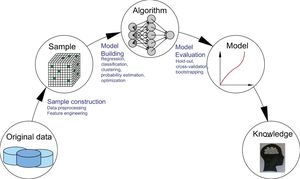The Indian government is taking significant strides to prepare the nation for the future, as highlighted by recent initiatives including the NIPUN Bharat Mission and the Union Budget 2025 aimed at self-sufficiency and growth.
During the recent Union Budget presentation for 2025-26, Finance Minister Nirmala Sitharaman announced ambitious plans for achieving self-sufficiency in pulses production by 2029-30. With the country currently grappling with rising inflation rates, peaking at 18% for pulses at the retail level, the new initiative is aimed at addressing not just the supply but also the quality and sustainability of staple food sources.
“Our government will now launch a six-year mission for self-sufficiency in pulses,” Sitharaman stated, emphasizing the focus on tur (pigeon pea), urad (black gram), and masoor (yellow lentils). The mission includes developing climate-resilient seeds, safeguarding remunerative prices for farmers, and enhancing post-harvest management. She also expressed strong intentions from the central government to procure these products directly from farmers, encouraging more participation.
According to agriculture ministry data, pulses output stood at 27.5 million tonnes for the 2023-24 period, showing slight growth over previous years. Yet, with approximately 5-6% still being fulfilled through imports, challenges persist, particularly due to the uncertainties posed by extreme weather conditions impacting domestic production.
Chronic challenges faced by pulses farmers include volatile global prices and inadequate incentives for crop diversity, as noted by agricultural analysts. Avishek Agrawal, an analyst with Comtrade, elaborated on the necessity of crop diversification as “the government will have to incentivize farmers sufficiently across varieties to stop imports.”
Micro and small enterprises, the backbone of India's economy, are also set to benefit from reforms aiming to ease the business environment, as highlighted by the Economic Survey 2024-25. The report underscored the importance of deregulation as the central theme to bolster the growth of micro, small, and medium enterprises (MSMEs). The Chief Economic Advisor (CEA), V. Anantha Nageswaran, advocates for deregulating to facilitate the growth of these enterprises, asserting, "The faster economic growth India needs is only possible if state and union governments continue to implement reforms."
The Economic Survey posits a projected economic growth rate between 6.3% to 6.8% for 2025-26, driven by significant focus on domestic consumption as the primary economic lever, especially as India aims for higher standards of living for its populace. It emphasizes the need to prioritize sectors where India can establish itself uniquely on the global stage.
Underlying the government’s strategy is the movement toward building institutions for technological advancement. Recent discussions at PwC India drew attention to how these fiscal strategies align with building a future-ready workforce. Sanjeev Krishan, the Chairperson of PwC India, commended the budget’s focus on skilling and establishing training institutes to stimulate employment and innovation, particularly highlighting the goal of cultivating AI innovators.
“These steps could reduce the burden on our cities, drive consumption, and balance growth between urban and rural sectors,” Krishan noted, emphasizing the need for collaboration between states and the central government to realize these ambitious goals. He described the initiatives as foundational for creating job opportunities and stabilizing economic growth.
The survey does not shy away from the challenges, stressing the vulnerabilities of the workforce, particularly those engaged in low-skill jobs, due to rapid technological advancement and the demands of AI integration. It warns of the “protracted labor displacement,” which could lead to severe economic disparity if not managed wisely.
Beyond production and employment measures, there is also emphasis on education reform through the NIPUN Bharat Mission. This mission has been systematically implemented since its launch in 2021, focusing on literacy and numeracy among younger students. Latest data reveals promising trends, such as improvement noted within grade III students, highlighting the real impact of this mission on foundational education.
The report reflects broader government initiatives tied to enhancing educational standards, showcasing successful implementations across various states, which underline India’s commitment to quality education. Progress indicators include significant increases in the percentage of children achieving grade-level proficiency.
Overall, the government's multifaceted strategy, driven by the Economic Survey's recommendations, is directed at achieving self-sufficiency, promoting equitable growth, and effectively managing technological changes. Both the Union Budget 2025 and the Economic Survey highlight the comprehensive nature of these missions, asserting their importance for India’s socioeconomic advancement heading toward 2047, the centenary of India's independence.
To sum it up, India’s current national missions are not only about economic recovery post-pandemic but transforming the nation’s future with sustainability and growth at their core. The focus is on fostering innovation, enhancing workforce skills, and achieving food security, positioning itself as a self-reliant economy. The road may be long and winding, but collective efforts from the government, enterprises, and citizens will pave the way for enduring growth.



